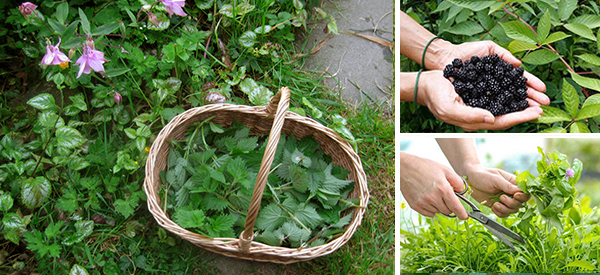
8 Medicinal Herbs You Should Be Picking This Summer
Comfrey
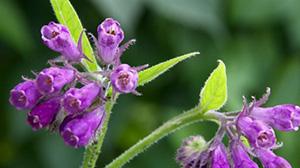 This thick leafed plant is common throughout North America, but it causes liver damage if ingested. Use it only externally. The leaves were traditionally used to treat broken bones and sprains and ease the pain. However, you can also use the roots.
This thick leafed plant is common throughout North America, but it causes liver damage if ingested. Use it only externally. The leaves were traditionally used to treat broken bones and sprains and ease the pain. However, you can also use the roots.
Comfrey leaves are best used fresh or in an ointment. You can crush the fresh leaves and apply to aches and pains, as well as burns and bruises.
The roots may be dried for later use, but can also be used fresh. In either case, use 3.5 oz. of root in 2 cups of water. Simmer for 15 minutes and drain. Mash the roots and apply cooled to the area that hurts.
Blackberries
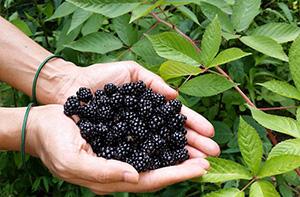 You probably already look for these prickly bushes, hoping for some tasty fruit, but did you know the leaves are medicinal? Blackberry roots are useful, too. You can use the leaves and the roots work to prevent diarrhea and as an anti-inflammatory.
You probably already look for these prickly bushes, hoping for some tasty fruit, but did you know the leaves are medicinal? Blackberry roots are useful, too. You can use the leaves and the roots work to prevent diarrhea and as an anti-inflammatory.
Pick fresh leaves and dry immediately until dry enough to crumble.
To prepare, you can use about 2.5 oz. of leaves or washed roots steeped for 5-10 minutes in one cup of very hot water. If you’re using dried, use half the amount. Cool and use orally to prevent stomach upsets, or use as a mouthwash to help heal cuts in the mouth. You can also crush the fresh leaves and apply directly to a cut to help reduce inflammation.
Red Clover
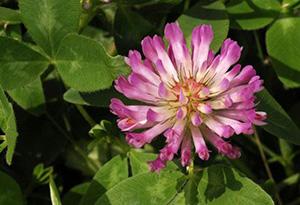 Found around the world, this plant is pretty and a favorite fodder for animals. It also has some pretty impressive healing properties for humans. The most common use is to ease coughing, but many people swear by red clover as a detoxifier, too. For those with asthma or bronchitis, it can be a life saver.
Found around the world, this plant is pretty and a favorite fodder for animals. It also has some pretty impressive healing properties for humans. The most common use is to ease coughing, but many people swear by red clover as a detoxifier, too. For those with asthma or bronchitis, it can be a life saver.
You should pick the flowers of the clover early in the morning and dry immediately. Once dry, the heads may be crumbled and saved in a cool, dark place. To prepare, add 3 teaspoons of dried red clover to each cup of hot water. Don’t boil the water. You should steep the tea for longer than most herbs, at least 15 minutes, before drinking.
Feverfew
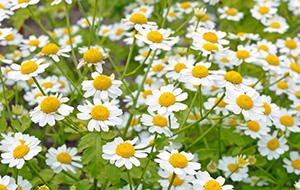 A known anti-inflammatory, feverfew can be used to treat headaches, including migraines. It’s also used to help reduce anxiety. In all cases, it’s best taken on a daily basis if you want the full effect.
A known anti-inflammatory, feverfew can be used to treat headaches, including migraines. It’s also used to help reduce anxiety. In all cases, it’s best taken on a daily basis if you want the full effect.
You can harvest the leaves and flowers, just as the flowers start to appear. This is when the plant is most potent. Harvest once the dew has evaporated and tie the stalks together. Hang upside down in a dry place to preserve. After a week, the dried herb is ready to use. Crumble the leaves and flowers into a jar and throw away the stalks.
To prepare, use 2 tablespoons of dried leaves and flower (or a quarter cup, if you’re using fresh) in a cup of boiling water. Steep 5 minutes before straining and drinking. Alternatively, you can grind the herb and use in capsules, taking two daily to prevent migraines.
Note: It’s important that pregnant women and those allergic to ragweed avoid using feverfew.
Dandelion
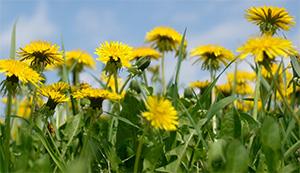 Most people are aware that dandelion leaves are edible, but the root is excellent for stimulating the appetite and cleansing the gallbladder and liver. It does work as a diuretic, so be aware of this if taking the root.
Most people are aware that dandelion leaves are edible, but the root is excellent for stimulating the appetite and cleansing the gallbladder and liver. It does work as a diuretic, so be aware of this if taking the root.
You can dig up the roots in the spring, before the flowers bloom. Clean and dry, then use in an alcohol tincture. You can take half a teaspoon in water twice a day to help keep your digestive system functioning well, or increase to a full teaspoon if you have stomach issues or need to eliminate edema.
The leaves may be picked at any time and dried, then crushed and used to make tea. Add 1 tablespoon to a cup of boiling water and steep for 5 minutes. Alternatively, you can use a handful of fresh leaves with the same effect.
Related: 25 Reasons You Should Go and Pick Dandelions Right Now!
Plantain
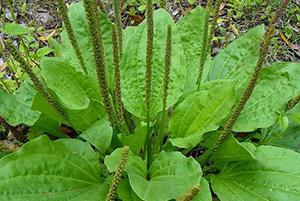 Chances are, you’ve seen this little plant growing in the cracks of sidewalks and in your lawn, but you may not have realized just how useful it is. If you’re bitten or stung by an insect, plantain is the plant you want to have on hand.
Chances are, you’ve seen this little plant growing in the cracks of sidewalks and in your lawn, but you may not have realized just how useful it is. If you’re bitten or stung by an insect, plantain is the plant you want to have on hand.
To use this helpful herb, you can either mix it into an ointment, or you can grind the fresh leaves into a paste. Apply the paste to the sting or bite and you’ll feel how quickly it starts to work.
Elderflower
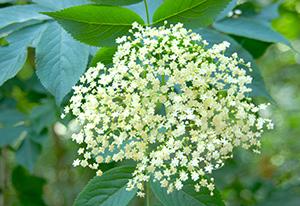 If you want to increase the strength of your immune system, elderberry plants are just what you should be looking for. Both the berries and the flowers are useful, but you should avoid the raw berries. It’s also important to skip using this herb if you are using any chemotherapy, diuretix, diabetic medications, laxatives, or other types of drugs that may interact with it.
If you want to increase the strength of your immune system, elderberry plants are just what you should be looking for. Both the berries and the flowers are useful, but you should avoid the raw berries. It’s also important to skip using this herb if you are using any chemotherapy, diuretix, diabetic medications, laxatives, or other types of drugs that may interact with it.
Berries reduce inflammation in the mucous membranes and help boost the immune system. They can be prepared as jam or syrup and taken by the spoonful as needed. The flowers may be dried and a tablespoon added to hot water for 5 minutes. Sip the tea to relieve respiratory inflammation and flu symptoms. You can also apply the tea directly to wounds.
Burdock
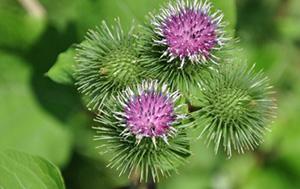 A common weed that many people try to eliminate, burdock roots are ideal for helping with acne and other skin problems. You simply need to harvest the roots in late summer or early fall, once the leaves are large and green on top. Dry the roots, then create a tincture from this with alcohol. The tincture can be taken internally to help purify the skin. The proper dose is 10-20 drops in water per day.
A common weed that many people try to eliminate, burdock roots are ideal for helping with acne and other skin problems. You simply need to harvest the roots in late summer or early fall, once the leaves are large and green on top. Dry the roots, then create a tincture from this with alcohol. The tincture can be taken internally to help purify the skin. The proper dose is 10-20 drops in water per day.
If you prefer to use the fresh leaves, you can boil a handful in water. Discard the water and eat the boiled leaves. The water is too bitter to use internally, but you may wish to use it as a rinse on affected areas of skin.
While your herb garden is a wonderful place to cultivate your favorite herbs, you can also find medicinal herbs outside of your cultivated herbs. The world is full of wonderful medicines, you just need to put them to use.
You may also like:
 How To Properly Dry Plants for Medicine
How To Properly Dry Plants for Medicine
The US Army’s Forgotten Food Miracle (Video)
7 Medicinal Herbs You Can Grow In House
15 Common Wild Plants You Never Thought Were Edible
If You See This Weed Growing In Your Yard, Don’t Pick It – Here’s Why

Thanks to your wonderful articles, I get so excited when I take my grandkids for a walk. I now see so many wild and wonderful things to harvest in our rural hedgerows here in Ireland. I will be very busy for the next few months storing stuff for the winter flues and colds. Thank you again
Hi Marian,
Thank you so much for your comment.
Please let me know how your forage adventure went!
God bless!
Thank you but I was wondering. I live in Florida and I have seen these plants in my yard but they not always grow.sometimes they do but not always.
Where can I go to gather all these herbs and plants.
Thank u very muvh.zYour knowledge is a lot of help.thank you.
Jehova zbkess you
Comfrey has been taken internally quite successfully for thousands of years. The property that causes damage to the liver is only a problem if taken on an empty stomach for an extended amount of time. Tylenol has the same problem, however the FDA doesn’t talk about that. I am sure that you cannot legally state that it can be used internally but wanted to make this comment for all the others reading the article. It is extremely helpful to repair bones and tissues. Some have reported their broken bones healing in half the time. One nickname is “knit bone.” A truly amazing plant.
So true about Tylenol and pharmaceutical drugs! They have SO many side effects, and yet natural herbs are often vilified in the pharmaceutical and medical world. We have to use caution (and education) with Mother Nature, but even more so with man-made medication.
Yes, I have been taking root as a part of medicinal tea for sensitive lining of stomach and intestinal., when I start to have pain. But not frequently and only when I needed. And it helps.
Your post on Burdock states “Dry the roots, then create a tincture from this with alcohol. The tincture can be taken internally to help purify the skin. The proper dose is 10-20 drops in water per day.” Be careful what kind of alcohol you use because if you use methal alcohol instead of ethyl alcohol you will poison yourself.
Hi Robert,
Thank you so much for your comment. I truly appreciate your awareness.
Tinctures are usually made with vodka, brandy or glycerites. It depends, as you can make both alcohol-free tinctures or tinctures with alcohol.
God bless!
Robert is it okay to use gin?
Thank you for your book and e-mails so very helpful. I am glad to find a use for my burdock and plantain! We are picking yarrow and feverfew, also dandelions.
Hi Pam,
Thank you so much for your comment and for your kind words as well!
We are happy that our article was useful to you.
God bless!
Pam, please tell me how you use yarrrow and dandelion. Jim
I live in Florida, the herbs you suggest do not grow here for the most part. And your
book does not indicate Florida plants. Can you suggest some to me?
Hi Susan,
Thank you so much for your comment.
In Florida you can successfully grow the following herbs: Basil, Cilantro, Dill, Lemon Balm, Mint, Oregano, Parsley, Rosemary, Tarragon, Thyme.
God bless!
Ordered your book months ago still haven’t received it ??
I have lambs ear doing great but I’m not sure how to use them short of absorption. Can they be dried and used?
Hi Mary,
Thank you so much for your comment.
Lamb’s ears get their name from their soft, fuzzy leaves. Lamb’s ears’ leaves have a sweet, apple-like flavor and can be steeped fresh or dried for tea. Cut the lamb’s ears just as the flowers are beginning to open. They will continue to open slowly during the drying process.
God bless!
There is a creek that I go to that back in the 1800’s and before. That the Native Americans planted different herbs and fruit. There are California grapes growing that the trunks look like a tree they are so thick. Now that I have your book and a plant identification app I can gather herbs.
Hi Debra,
Thank you so much for your comment.
We are glad that our book is useful to you.
God bless!
Thank you for this article. I see in differnt places about using roots for consumption or medicine. In this case, dandelion roots.
It makes me wonder. How does one clean the dandelion root? Does it mean you peel it so that the part that came in contact with the soil is gone? That’s probably not the correct assumption since the roots are very thin. Please help me figure this out…
Hi HT,
Thank you so much for your comment.
I advise you to soak them in cold water for a bit, then rub them individually with your fingers while they’re still soaking. I think soaking is easier than using running water, but it’s still labor intensive.
God bless!
Thank you so much for your advice! That totally makes sense rather than peeling.
[…] 8 Medicinal Herbs You Should Be Picking This Summer […]